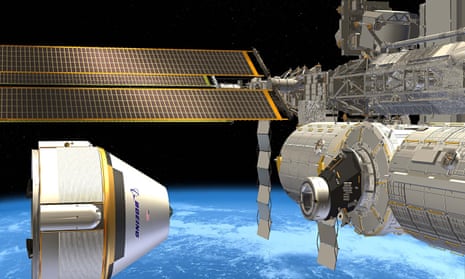The US space agency Nasa has just decided to hedge its bets and pay not one but two US corporations $6.8bn to deliver people and their luggage to the International Space Station. Charles Bolden, Nasa’s administrator, put it bluntly. “Today we are one step closer to launching our astronauts from US soil on American spacecraft and ending the nation’s sole reliance on Russia by 2017.”
Since the US ended its 30-year-old space shuttle programme, Russia is the only nation that can and does deliver people to the ISS with its Soyuz system. But in the past six years, the European Space Agency has also sent five space delivery vans to the ISS, each with 6.6 tonnes of fuel, air, water, food and spare parts. Each has then headed back into the atmosphere, laden with space-station waste – much of it from the zero-gravity toilets – where it burns up.
This time, the aim is to bring all the ordure safely back to Earth. One of the two contracts has gone to Boeing, which will get $4.2bn for a seven-seater crew space transportation capsule that can be used up to 10 times.
SpaceX, a new venture launched by Elon Musk, the PayPal king, is to get $2.6bn for its reusable Dragon capsule, which has already made two successful deliveries of cargo to the space station. But while Boeing has been involved in manned flight for decades, SpaceX has yet to prove that it can get the equivalent of a mini-bus full of passengers to an altitude of 400 kilometres and then deliver them to the ISS. The SpaceX engineers are convinced they can do it more cheaply; in the unforgiving environment of low Earth orbit, there isn’t much room for miscalculation. If both corporations deliver the goods, then everybody wins: two private companies will be able to be equipped to take people for joyrides into space.
It also means Nasa can get on with more far-reaching ambitions, including deep-spacecraft Orion, which could one day take astronauts to the moon or Mars.

Comments (…)
Sign in or create your Guardian account to join the discussion